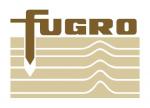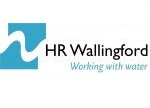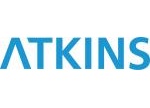Project Work Blocks
Recent NOC-led research has identified two potentially major environmental risks to infrastructure that are potential omissions from the UK National Risk Register: landslide-tsunami and submarine cable breaks. These are just two hazards that may require future consideration and several others have been identified by funded ERIIP projects (e.g. space weather and water infrastructure, ash fallout and nuclear power). The intention in this first part of the fellowship is to pool expertise across academia (existing ERIIP projects and wider afield) and industry to identify previously unrecognised environmental risks to the full range of infrastructure considered by ERIIP.
Approach: Two-way knowledge exchange is required between industry (to understand vulnerability) and academia (identify emerging hazards). Researchers will be consulted to develop an inventory of previously unconsidered environmental hazards. The project will first focus on coastal and marine hazards to develop the approach. The marine environment is relatively poorly understood in comparison with onshore settings, yet more infrastructure is being pushed offshore (e.g. offshore windfarms, limitations for installing high voltage cables on land, proposed offshore carbon capture and storage, water supply pipelines etc.). The underexplored marine area therefore has high potential for more unidentified hazards. Once the analysis of marine hazards is complete, the inventory will be extended to the full range of environments for infrastructure; broadly summarised as: coastal & marine; fluvial; atmospheric; and subsurface. The inventory will be screened and prioritised at a three part workshop: 1) “Buy in” short case study presentations showing how successful academic-industry collaboration has resulted in step-changes; 2) “Quick pitch” (1-3 minute) presentations on new proposed hazards; 3) “Brain storm” discussion in break out groups on implications for infrastructure and which are the key hazards. An expert panel of industry and academic representatives will screen the hazards, identify those deemed a credible risk and to be the focus of future research.
Outcome: A prioritised inventory of emerging hazards will highlight knowledge and awareness gaps to shape future ERIIP funding calls.
Historical and instrumental records of environmental hazards rarely exceed tens to hundreds of years, yet the recurrence of major hazards such as storm surges, extreme floods and severe space weather typically occurs on longer timescales. Recent flooding in Cumbria has been reported as ‘unprecedented’, however, long-term records provided by lake sediments indicates that similar events have occurred in the past. In order to understand the recurrence of low probability, but high magnitude hazards there is a need to: 1) acquire records that extend back beyond historical and instrumental records; 2) develop robust statistical methods that can either be applied to longer records, or that account for uncertainty in short or incomplete records of extreme hazards. Longer-term records allow us to understand how hazards respond to changing world. A recent study in Nature Climate Change (Hinkel et al., 2015) showed that sea level rise forecast by IPCC was majorly underestimated for storm surge risk. This resulted from the misuse of probabilistic outputs, and a lack of focus on the important high-end tail of sea level rise. At least three ERIIP projects, address how hazard rate and magnitude may change in response to future global warming and are valuable additions to a growing group of studies.
Multiple periods of enhanced rainfall led to an aggravation of recent Cumbrian flooding in winter 2015 as river levels had insufficient time to subside. Beyond the successive effects of flooding, combinations of hazards magnified the impact to communities. Surface water runoff was problematic for housing and power, swollen rivers damaged road bridges, and groundwater flow stressed underground sewers. This work block aims to integrate the findings from multiple disciplines to understand compound hazard scenarios. Many natural hazard studies typically focus on the effect of one hazard, but systems are complex and there is often interplay with other processes that may lead to amplificatory effects. For instance, two small storm surges in one week can be much more damaging than one much larger event (Wadey et al., 2014). Approaches on understanding such clustering of events are therefore highly valuable. ERIIP projects that attempt to understand cumulative risk effects will be used as case studies.
Approach: First, information will be collated from industry and ERIIP partners to understand 1) the vulnerability of specific types of infrastructure; 2) lessons learned and case studies of how hazards enhance impact; 3) future concerns in light of new technology, network expansion etc. Second, case studies will be collated where interplays between natural processes have been identified in an easy access illustrated report. Third, a modelling workshop will focus on approaches to modelling complex interactions between natural hazards and infrastructure. Some models have not yet been tested, such as abrasion and drag on subsea cables, so this workshop may identify some relatively simple, but valuable, physical experiments that can be implemented, or new approaches to numerical modelling of hazard-interactions. Researchers have started publishing data on the use of social media in disasters (e.g. Twitter, Facebook), so in the same workshop the merit of incorporating such unconventional approaches to risk assessment will also be explored. At the workshop it is likely that “pinch points” or “weak points” in the infrastructure networks will be identified that are most susceptible to natural hazards, and should be prioritised as the focus of future research.
Outcome: The identification of critical high risk, multi-hazard scenarios, pinch/weak points, and future modelling directions will inform future ERIIP calls and to form strategic collaborative research groups. This aims to improve research efficiency at addressing multi-hazard and complex environmental risks to infrastructure.
Emerging technology provides new insights into environmental risks. Unmanned Aerial Vehicles (UAVs, known as ‘drones’) equipped with microsensors allow for monitoring during a flood, for instance. This includes repeat mapping and time-lapse monitoring to understand short and long-term changes, real-time health diagnosis of structures, and field-scale experiments. Many existing and emerging technologies can be applied to assessing environmental risks posed to infrastructure; however, the awareness does not necessarily exist in both academic and industry communities. Good examples of emerging technologies in ERIIP projects involve real-time monitoring of groundworks, including in-situ moisture and tilt sensors, and satellite measurements of subsidence. These technologies are also applicable to slope stability issues relevant to a wider range of infrastructure. Here, it is proposed to summarise available technologies and tools that can be used across the full range of infrastructure and increase awareness, so they can be implemented more effectively. Many tools will provide major efficiencies by reducing the need for in-person inspections.




